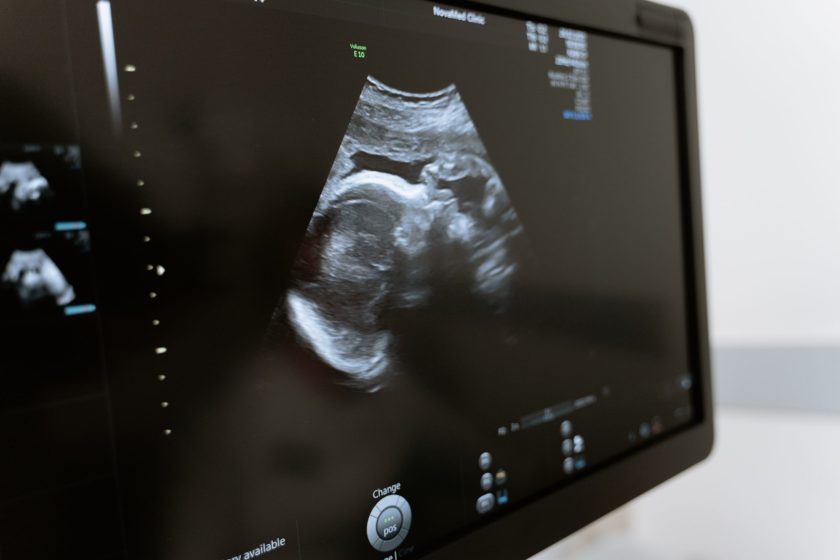Ultrasounds: what we recommend and offer

Ultrasounds use high-frequency sound waves to create visual images of structures inside the body. During pregnancy, it is a low-risk way to “see” your baby, your placenta, and other structures in your pelvis. At Oula, we offer a series of required and optional ultrasounds throughout the pregnancy journey. Additionally, at each prenatal visit, we use a “doppler,” which is a handheld listening device, to hear your baby’s heartbeat. The American College of OBGYN (ACOG) recommends only doing ultrasounds for specific medical purposes, though no current evidence demonstrates any harm or side effects from ultrasounds.
At Oula, we follow the scientific evidence to determine which ultrasounds should be required, and which are completely up to you!
Required Ultrasounds
There are two crucial and required ultrasounds. These required scans will likely be covered by your insurance plan, however we recommend that you always check with your insurance plan before doing any scans.
“Dating & Viability” Scan (ideally 8-11 weeks, but can be done as early as 6 weeks)
The purpose of this ultrasound is to ensure that the pregnancy is growing as expected inside the uterus, and to confirm your “estimated due date.” We recommend scheduling this scan between 8-11 weeks gestation, but offer the scan as early as six weeks. Having a D&V at six weeks can help if you’re feeling nervous because of early pregnancy complications, a history of pregnancy loss or just the vulnerable uncertainty that early pregnancy brings. Occasionally, a Dating & Viability ultrasound will have to be repeated before we can confirm your due date or the viability of your pregnancy – this happens more frequently when the initial scan is done at early gestational ages.
Because the Dating & Viability scan happens in early pregnancy, the ultrasonographer will use a trans-vaginal approach. This involves a slim ultrasound wand that is placed into the vagina in order to obtain clear views of the pregnancy, the uterus, and the ovaries.
You can schedule this scan directly from the Oula portal after your virtual Initial Intake visit. If you had a dating ultrasound at an outside provider before you came to Oula, it does not need to be repeated, but please do send us the records.
The “Comprehensive Anatomy” Ultrasound (20-22 weeks)
This scan takes a full, detailed view of the baby’s body as it has developed so far and checks for any possible issues or anomalies that may require further surveillance or a more specialized level of care. If you haven’t previously chosen to learn the baby’s sex, this is another opportunity. You will also learn the location of your placenta, the length of your cervix, and have overall views of your uterus and ovaries to check for issues or abnormalities. This ultrasound will be done via a transvaginal and transabdominal approach.
Optional Ultrasounds
There are two additional scans that you can opt into, however, these scans are purely optional, and while they may provide additional benefits depending on your medical history, they may not be covered by your insurance. You should check with your insurance company to determine what your out-of-pocket responsibility might be before you choose these scans, and in particular, ask them if they will cover both the NIPT blood test and the Nuchal Translucency ultrasound.
Nuchal Translucency (11-14 weeks)
During the “NT” scan, the sonographer will measure the “crown-rump” length (top of the head to the bottom of the tailbone) to confirm that your due date is correct and that your baby is growing appropriately. This ultrasound will pay particularly close attention to an area at the back of the baby’s neck called the nuchal fold or nuchal translucency (NT).
Abnormal measurements of the nuchal translucency (NT) can be soft markers for chromosomal abnormalities or other syndromes, though the measurement is not 100% diagnostic. In addition, this ultrasound can identify a limited number of abnormalities with the baby’s heart, brain, spine or abdominal wall. The NT ultrasound will be reviewed by a Maternal Fetal Medicine Specialist who will make recommendations for further testing.
The Early Anatomy Ultrasound (16-18 weeks)
This scan is very similar to the required Comprehensive Anatomy Scan that happens at 20 weeks, but does not replace it. The benefit of an early anatomy scan would be to have an early glimpse at any significant fetal anomalies for which you might consider specific diagnostic testing or termination of pregnancy.
Additional ultrasounds recommended for risk factors or pregnancy findings:
There may be certain risk factors or findings during a routine exam that would indicate additional medically-necessary ultrasounds to confirm the health of you or your baby, particularly during your third trimester.
Growth scans: These scans estimate the size of your baby at the time of the scan, and when repeated every two to four weeks, the progress of your baby’s growth over time. In high-risk pregnancies, growth ultrasounds may be recommended starting at 24 or 28 weeks.
Biophysical profile (BPP) scan: This is a “wellness check” of your baby and the function of your placenta, and may be recommended weekly starting at 32-36 weeks for pregnancies with risk factors. A BPP scan looks at your baby’s movement patterns and includes a measurement of amniotic fluid volume. Normal BPPs give us reassurance that your placenta is working well and that it is safe to await spontaneous labor. If you have an abnormal BPP, we will send you to our hospital partner’s triage area for further monitoring. BPP scans may be done alongside growth scans.
If your pregnancy continues past your due date, we will recommend BPPs as we await the onset of labor. We recommend at least one BPP between 40-41 weeks and two per week after 41 weeks.
We strongly encourage you to reach out to your insurance company to understand your coverage for ultrasounds in pregnancy. If we are recommending additional scans to you for risk factors or pregnancy findings, we are prepared to defend the clinical rationale for these ultrasounds to your insurance company, but we cannot guarantee that the ultrasounds will be covered.
